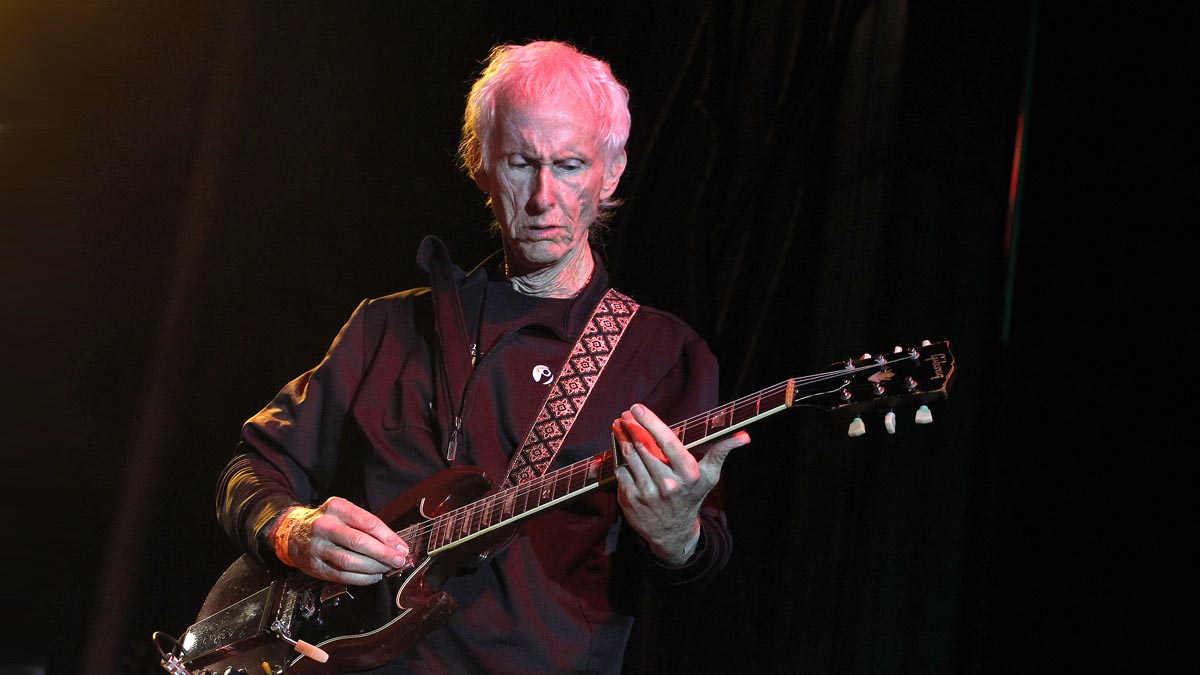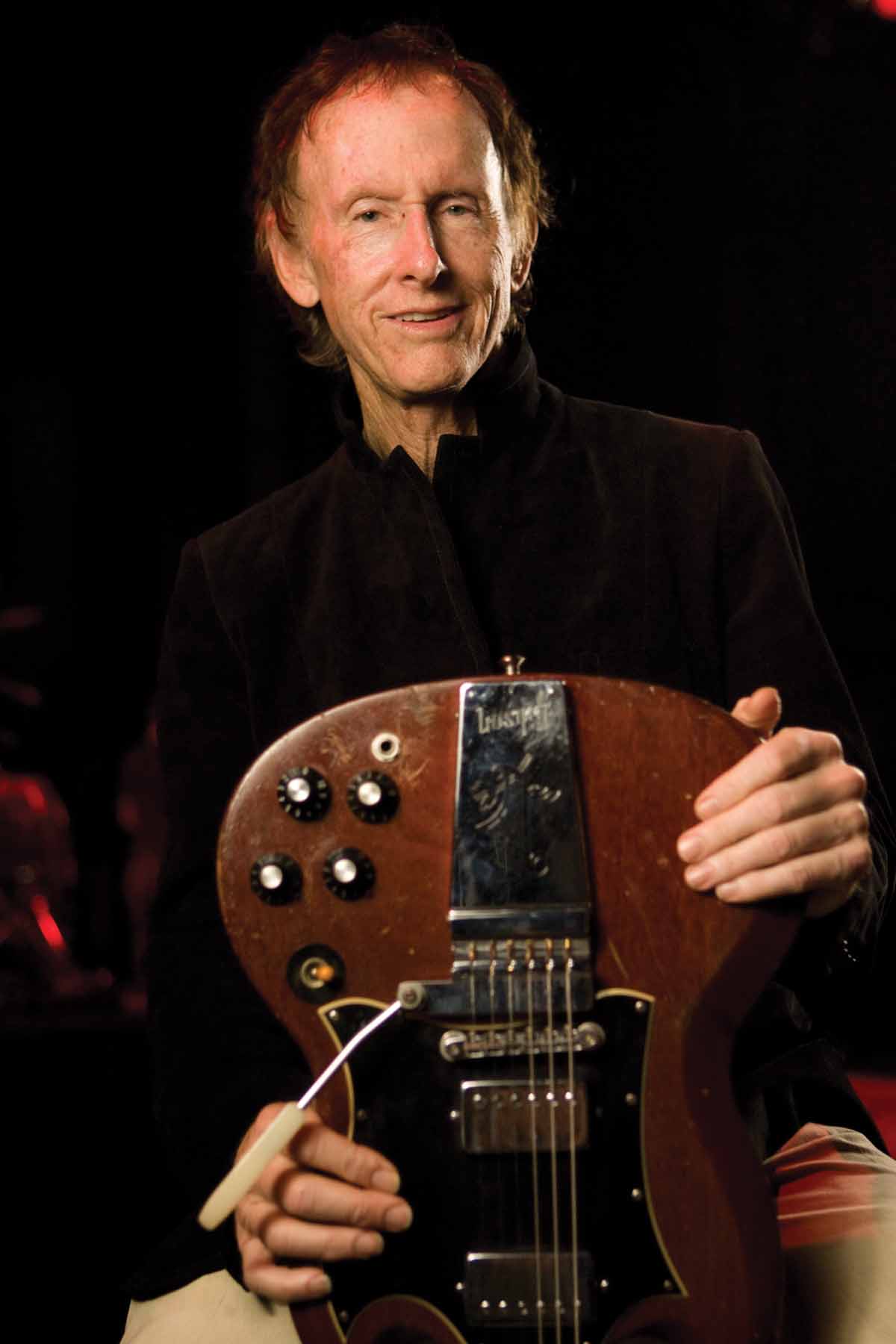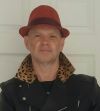Robby Krieger Discusses His Unorthodox Slide Style, Gear, Leeches and Reworking a Doors Classic as an Instrumental
On 'The Ritual Begins at Sundown,' Robby Krieger turns up the heat with a blazing set of tunes.

As a member of one of rock’s most influential bands, Robby Krieger not only added unique textures and an innovative slide guitar approach to the Doors’ sound – he also wrote or co-wrote many of their most notable tracks, including “Light My Fire,” “Touch Me,” “Love Her Madly” and the bar-band staple “Roadhouse Blues.”
When Krieger joined the Doors, in 1965, he’d been playing electric guitar for only a couple of years, having started out performing flamenco and folk on an acoustic. He was always a keen experimenter though, and his explorations into Indian music helped him to find ways to broaden the palette of traditional rock and blues guitar approaches.
His slide playing is instantly recognizable, distinguished by long swoops into and out of notes, and an unconventional approach to blues that doesn’t slavishly reproduce all the well-trodden clichés.
Following the death of singer Jim Morrison in 1971, the Doors continued as a trio, with Krieger assuming some vocal duties, but after a couple of albums the members went their separate ways.
When I started playing slide, I really wasn’t good enough to copy Robert Johnson and those guys, and I kinda made up my own way of doing it
Krieger launched a solo career with an emphasis largely on jazz and fusion, although No Habla, his 1989 album, was much more rock and roots orientated. His new release is The Ritual Begins at Sundown (The Players Club), and it’s an astonishingly exuberant collection of fusion tracks that recall that genre’s best.
It even includes a reworking of the Doors’ “Yes, the River Knows,” from 1968’s Waiting for the Sun. Considering that his band is largely comprised of former Frank Zappa musicians, it’s little surprise that killer chops are on display everywhere, with fiendishly tricky heads and virtuoso soloing from all concerned.
Krieger chatted with Guitar Player about the gear and collaborative nature of the sessions that helped light a fire under these potent tracks.
The Ritual Begins at Sundown has a very organic sound, and the performances sound spontaneous and live. Does that reflect how you recorded it?
We all played the songs together live, but then I usually overdubbed my solos later. A few of the horn solos were added later as well, but it's mostly done live, in that sense. It doesn’t sound at all processed. It was all very old-school.
It’s noteworthy that you’re very generous about sharing solos with the band members, unlike a typical guitarist’s solo album where you’ll often find wall-to-wall guitar solos. It is very much an ensemble album, where we get to hear from everybody.
Yeah, that’s right. It’s important that everybody gets their say. I don’t want it to be just all guitar. You can get sick of that all-guitar approach pretty quickly as a listener.
“Slide Home” has a really rich tone. Was that the SG or the ’54 Les Paul?
No, that was a cheap Kay guitar that my buddy had. [laughs] For some reason it really sounds great for slide.
That’s a great example of your distinctive approach to slide, with the long swoops up and down the neck. It’s almost an Indian approach.
I think it could be, as there is a lot of that feel that I’ve tried to incorporate into my slide playing.
You make some unusual note choices, although what you play on slide will still often sound very bluesy without using the obvious moves.
When I started playing slide, I really wasn’t good enough to copy Robert Johnson and those guys, and I kinda made up my own way of doing it. “Moonlight Drive” [from the Doors’ Strange Days] is an example where I don’t think anyone had really played slide like that before. That was something the guys in the Doors liked.
Do you have any favorite tunings for when you play slide?
I use open G and drop D sometimes, but nowadays I most often play in standard tuning. It’s a lot easier that way. You don’t have to change guitars all the time.
“Hot Head,” “The Hitch” and “Bianca’s Dream” each have a strong bebop-style head, followed by solos from the band members. But when it comes to your solos, the music moves into a much more bluesy groove. Is that a deliberate attempt on your part to mix genres and maybe confound the listener’s expectations?
Yeah, I would say so. Those are the last songs we did on the album and they were really fun to do. You don’t want to be afraid to change things up when you’re trying to create something.

“Bianca’s Dream” is very evocative of the kind of gritty soundtracks from movies like Shaft. Indeed, a lot of your music is very cinematic. Have you thought about doing soundtrack work?
That’s an interesting perspective on “Bianca’s Dream.” I’ve been interested in soundtrack work over the years, and I have done a handful of things. Of course, Ry Cooder has been very active in that area, but I just never really got offered a lot of things. Maybe I didn’t have the right agent or something – or maybe Ry got all the gigs. [laughs]
I have done a few, as I said, and it is a lot of work for what you can get out of it. You might do something, but then the producer or director will say, “Well, that’s really nice but why don’t you try this?” [laughs] It never ends up being what you wanted it to be. There are a lot of compromises.
The new version of “Yes, the River Knows” has a very vocal feel in the way that you phrase your notes.
I always loved the piano that Ray [Manzarek] did on that, so we wrote out the piano part note for note, and Tommy Mars played that. It’s funny you say that about the vocal feel, as Macy Gray has actually done a vocal for “The Hitch.” I wrote some words for the melody, and we did it as a tribute to Prince. That will come out quite soon.
Both of my thumbs and my little finger on my left hand have been stiff with arthritis. I recently went for this weird treatment where they get leeches to bite you
You have a lot of Frank Zappa’s old band members on the album. Why did you choose to cover “Chunga’s Revenge”?
I toured for a couple of years with those guys, and that was one that we really liked. I really wasn’t a huge Zappa fan from his early days, but in his later work he did some fantastic things using great musicians.
Arthur Barrow, who I’ve worked with a lot over the years, was his bass player. He would rehearse the band and write arrangements down. They’d rehearse a piece and nail it down for maybe three hours, then Frank would come in and change everything. [laughs]
On “Dr. Noir” and a number of other tracks, the heads that you write sound very horn influenced. Are you consciously thinking in terms of horn lines for those parts?
I based that one on a practice lick that I used to run through. It developed into the piece on the album. What’s fun about jazz and bebop is the way you can use note phrasing and rhythms that are fairly complex. They can be quite challenging to play, which then makes it more enjoyable.
Tone is very important to you. Are you constantly looking for ways to refine your sound?
I’ve gone back to old-school little pedals. I don’t like the modeling stuff they have out now. Sometimes I even like just going into the amp, which is a bit more like the Doors sound. I don’t like too much weird stuff in my chain.
I have two Ibanez Tube Screamers: one for overdrive and one for volume. The two together make a real nice sound. I have a Cry Baby and a couple of delays, and I just got a TC Electronic delay that’s cool. As you push it harder, it “whooshes” the sound.
I’m working on some Van Halen kind of stuff. That style of tapping, y’know?
In terms of guitars, I presume it’s still mainly the Gibson SG for you?
Yeah, I really like the SG. It was the first electric guitar that I had. I like the light weight and the double cutaway. I used an ES-335 for years, but then my roadie found a ’67 SG in a pawnshop about 30 years ago, and that’s the one that my signature model is based on.
You also have a signature Custom Shop ’54 Les Paul. Do you use that much?
I use it at home a lot when I’m recording but not so much on the road. Gibson is making another signature SG for me with one of my paintings on the body, which looks really cool.
Do you use the SG’s Vibrola much?
Not a whole lot. I wish I could just get rid of it, because it makes it so easy to go out of tune. I played with the Allman Brothers' kids [the Allman Betts Band] last night and they had an SG like mine without the whammy bar, and I noticed that it never went out of tune. There’s always a compromise with the bar. Mind you, someone like Jeff Beck never seems to go out of tune with a whammy bar.
What is your preferred amplification these days?
I’m using the 4x10 Fender Blues Deville. I really like that amp. I have a lot of really old amps at my studio, and I’ll record with those, but playing live I've always used the Deville.
Do you still feel as excited by music today as you did back when you first started to play?
I would say so – or maybe even more. When I first started on guitar, I was playing flamenco, and in fact I still play it once in a while. Then I was into folk, but once I got into electric music, I wanted to play like Mike Bloomfield, who was my favorite back then.
But I wasn’t good enough to play that, so I started to do my own thing. Then I got into jazz and fusion, but that’s still a work in progress. What do you work on in your own playing? I’m working on some Van Halen kind of stuff. That style of tapping, y’know?
That is the least likely answer you could have given me!
[laughs] It just goes to show that you never know.
As the years go by, do you ever worry about issues with your hands?
Actually, both of my thumbs and my little finger on my left hand have been stiff with arthritis. I recently went for this weird treatment where they get leeches to bite you. They have something in their saliva that supposedly acts as a blood thinner and has some other beneficial properties for the condition.
They were used a lot in medicine back in the day. The guy who performed the treatment on me studied them and narrowed it down from 30 types of leeches to two that really work. So that’s pretty cool.
You’ve maintained a gap of approximately 10 years between your last four albums. So is the next one due out in 2030?
[laughs] I’m already working on the next one. The business is different these days, and it’s harder to get music released. Before making the last album, I was doing quite a lot of Doors stuff live, and I had my son singing, which was fun. So things like that take up your time, and before you realize it, a few years have passed.
Four years ago, I bought Horse Latitudes studio, which made me want to record more. I’m currently working on a reggae instrumental album with Phil Chen, who played bass on Jeff Beck’s Blow by Blow album.
Do you ever tire of playing all the old Doors material?
Doors songs are still fun to play. I just did “Roadhouse Blues” last night with the Allmans’ kids, and the audience went crazy for it.
Did you ever imagine that your career would go on this long?
Never. I didn’t think I could do this for a living after the Doors. I’m lucky, and you can’t ask for much more than a life in music.
- Robby Krieger's new album, The Ritual Begins at Sundown, is out now via Mascot.
Get The Pick Newsletter
All the latest guitar news, interviews, lessons, reviews, deals and more, direct to your inbox!
Mark is a freelance writer with particular expertise in the fields of ‘70s glam, punk, rockabilly and classic ‘50s rock and roll. He sings and plays guitar in his own musical project, Star Studded Sham, which has been described as sounding like the hits of T. Rex and Slade as played by Johnny Thunders. He had several indie hits with his band, Private Sector and has worked with a host of UK punk luminaries. Mark also presents themed radio shows for Generating Steam Heat. He has just completed his first novel, The Bulletproof Truth, and is currently working on the sequel.
“We’d heard Jimi Hendrix, we'd heard the Who, but now we finally got to see these guys. And watching Jimi Hendrix burn his guitar….” Grace Slick on Hendrix at Monterey, Jefferson Airplane and the Spanish origins of “White Rabbit”
“I’m still playing but I’m covered in blood. Billy’s looking at me like, ‘Yeah! That’s punk rock!'” Steve Stevens on his all-time worst gig with Billy Idol — and the visit to Jimi Hendrix's grave that never happened










